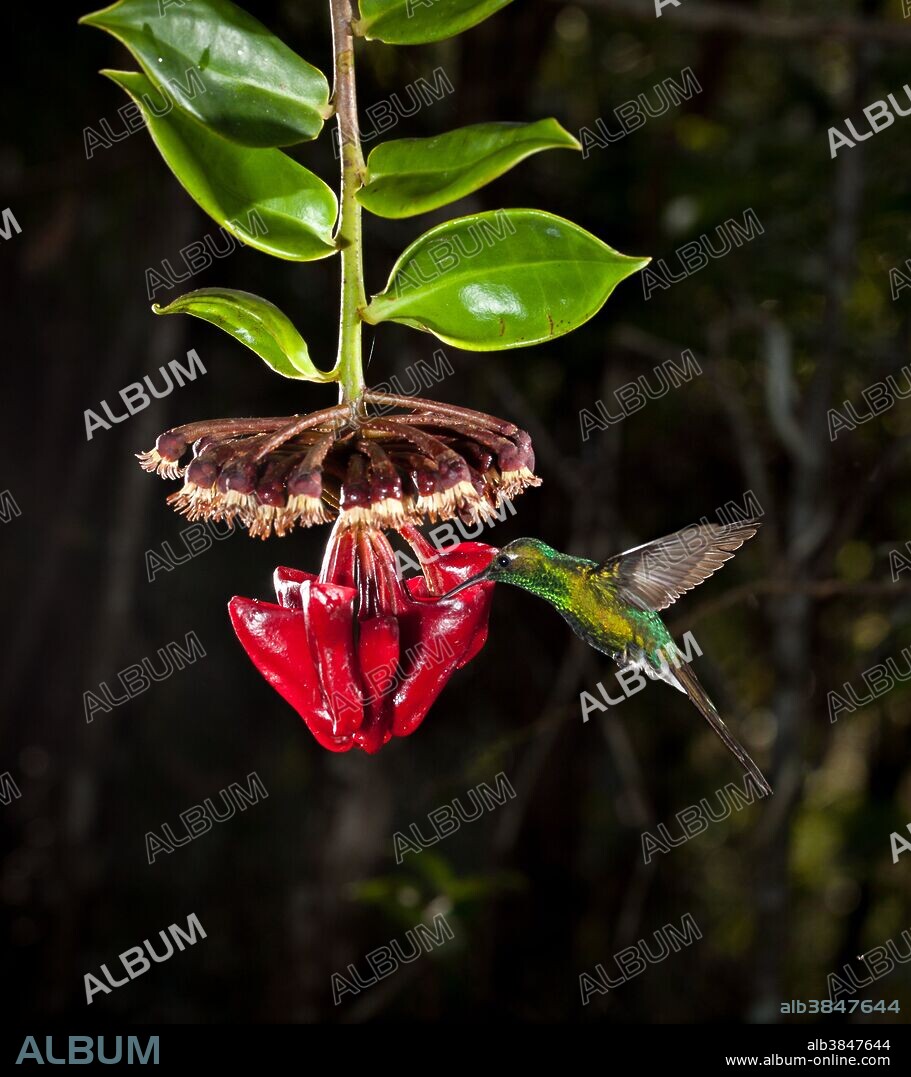alb3847644
Cuban emerald hummingbird at flower

|
Ajouter à une autre Lightbox |
|
Ajouter à une autre Lightbox |



Avez-vous déjà un compte? S'identifier
Vous n'avez pas de compte ? S'inscrire
Acheter cette image.
Sélectionnez l'usage:

Titre:
Cuban emerald hummingbird at flower
Légende:
Voir la traduction automatique
A Cuban emerald hummingbird (Chlorostilbon ricordii is "stealing" nectar from a Marcgravia evenia inflorescence. This is a rare plant, endemic to Cuba, that has evolved special echo-reflective leaves to help guide nectar-feeding bats to its inflorescences. This plant, long thought to be hummingbird-pollinated, was recently discovered to be pollinated by bats instead. Each hanging inflorescence has one or two dish-shaped, upturned leaves just above, which reflect bat echolocation, guiding approaching bats like airport landing lights guide pilots. These plants are rare and widely scattered, typically in dense vegetation. Bats are their ideal pollinators because they travel much longer distances than either insects or hummingbirds. In fact, neither insects nor hummingbirds are large enough to contact the plant's reproductive organs, so even when they find Marcgravia flowers, they rarely achieve pollinaton. Nevertheless, they are quite capable of stealing nectar. This plant grows in dense vegetation, as illustrated here, perhaps explaining the need for echolocation guides. This inflorescence is shown just prior to blooming. It was already producing nectar to attract potential pollinators. Note the up-turned reflector leaf versus the majority that are flat and horizontally oriented.
Crédit:
Album / Science Source / Merlin D. Tuttle
Autorisations:
Modèle: Non - Propriété: Non
Questions sur les droits?
Questions sur les droits?
Taille de l'image:
2974 x 3343 px | 28.4 MB
Taille d'impression:
25.2 x 28.3 cm | 9.9 x 11.1 in (300 dpi)
 Pinterest
Pinterest Twitter
Twitter Facebook
Facebook Copier le lien
Copier le lien Email
Email
